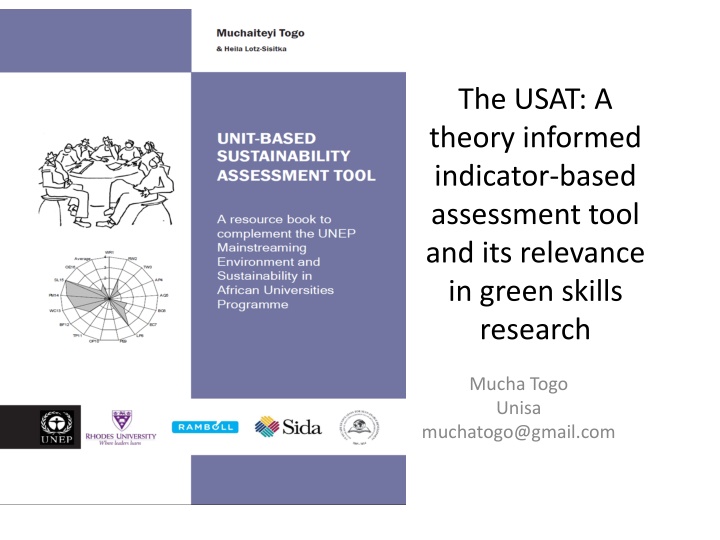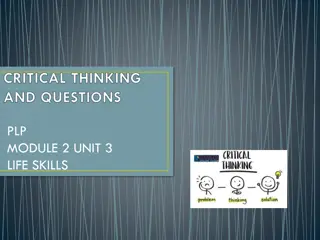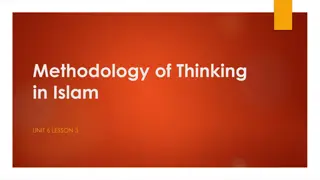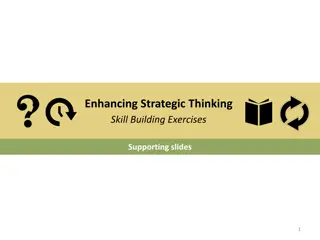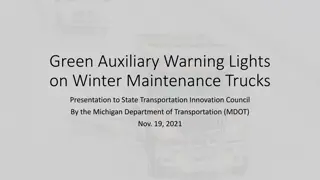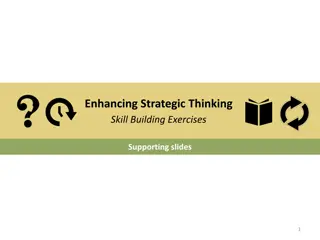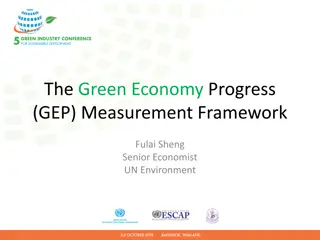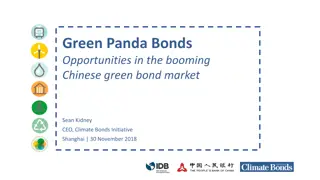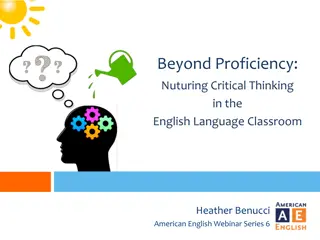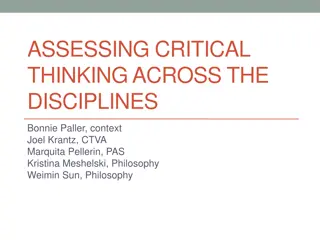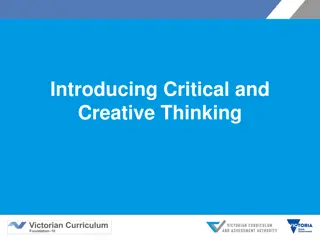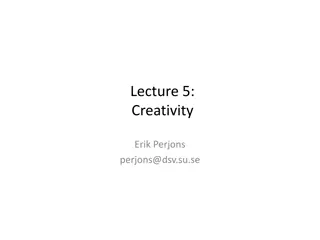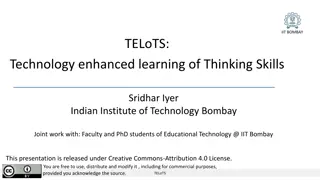Enhancing Systems Thinking Through the USAT Tool in Green Skills Research
Explore the Theory-Informed Indicator-Based Assessment Tool (USAT) and its role in promoting sustainability mainstreaming. Learn about its development, systemic contextual understanding, and components like curriculum, operations, students' involvement, and policy. Discover how the tool enhances systems thinking for sustainable development.
Download Presentation

Please find below an Image/Link to download the presentation.
The content on the website is provided AS IS for your information and personal use only. It may not be sold, licensed, or shared on other websites without obtaining consent from the author.If you encounter any issues during the download, it is possible that the publisher has removed the file from their server.
You are allowed to download the files provided on this website for personal or commercial use, subject to the condition that they are used lawfully. All files are the property of their respective owners.
The content on the website is provided AS IS for your information and personal use only. It may not be sold, licensed, or shared on other websites without obtaining consent from the author.
E N D
Presentation Transcript
The USAT: A theory informed indicator-based assessment tool and its relevance in green skills research Mucha Togo Unisa muchatogo@gmail.com
Aims for developing the tool To support a whole systems approach to sustainability mainstreaming An understanding of a systems thinking approach and critical realist analysis in assessing and enhancing mainstreaming of sustainable development
Enhancing Systemic Contextual Understanding: The USAT TOOL Background to its development Theory informed design Reality exists independent of knowledge Social reality is stratified into three levels (Real causal mechanisms; Actual activated mechanisms; and Empirical current experiences) Environment -Context -Sustainability declarations Theories -Critical Realism -Systems thinking Basic Critical Realism Determining sustainability issues mainstreamed levels of integration of sustainability in practices Exploring causal factors behind the sustainability picture Other SATs -SAQ -AISHE -GASU interrelationships and interconnections among phenomena a systems view of education Analytical framework - abduction determining systemic issues to be addressed in developing a systems thinking approach to mainstreaming support a whole systems approach to sustainability mainstreaming USAT Systems theory
The USAT USAT Part A: Curriculum, Teaching approaches, Research, Community Service, Examinations, Staff Expertise USAT Part B: Operations and Management USAT Part C: Students Involvement USAT Part D: Policy and written statements
The design of the tool Flexibility of use: Unit versus whole Inclusive of various university sections teaching departments University operational divisions Indicator-based Students, management (staffing), policy etc in addition to common functions like teaching, research and CE Different strata may possess different powers therefore influencing the whole in different ways (Archer, 1995) Guidelines For benchmarking, comparative analysis, progress Indicators Indicators
Using the USAT -Interviews -Content analysis (course outline/contents , PEQ papers etc.)
EXAMPLE: Part A USAT Assessment results (UNISWA) Academic communication and skills Geography, Env Sciences and Planning Geography, Env Sciences and Planning Academic communication and skills Quite a number of courses with sustainability content Low integration on sustainability in the curriculum A high level of engagement with sustainability in research There is integration of sustainability in research Community engagement initiatives which focus on sustainability No community engagement initiatives with a focus on sustainability Average score from the sustainability assessment: 3.6 Average score from the sustainability assessment: 0.5
CR analysis Significance What it enables Empirical: USAT - level of integration Actual: Systems theory recontextualisation of data to determine responsiveness of practices to relevant sustainability challenges Morphogenesis historical emergence of sustainability Real: ontological depth - Causal factors influencing practices Providing mainstreaming guidelines and targets Benchmarking initiatives Assessing progress Reporting
Noted Challenges Clear picture of sustainability mainstreaming but no explanation, no examples - Use of other methods to complement collected data Not all respondents had a good understanding of sustainable development issues elaboration Understanding the tool (indicators and rating) involvement of researcher in the assessment process
Significance Understanding of existing green practices their history and causality (CR) tools in green skills research informed indicator based Significance of theory Quick and easy identification of mainstreaming gaps (pictorial view) Relevance to context (systems theory - recontextualisation) decision-making tool: identifying key and relevant practices for mainstreaming baseline data enabling on-going assessment of progress.
